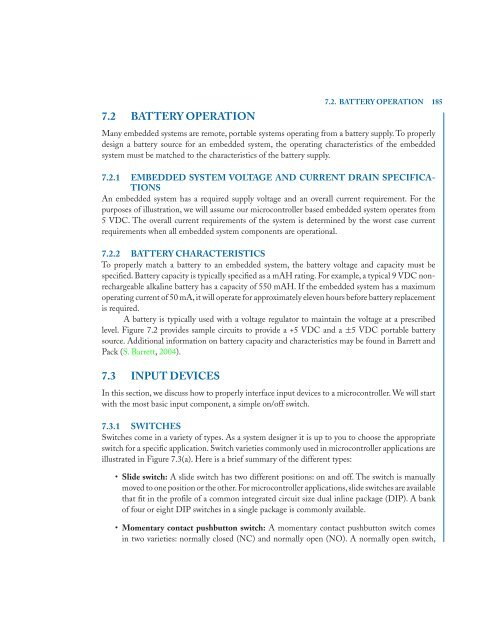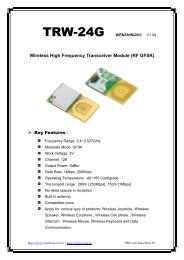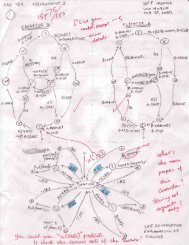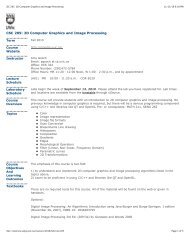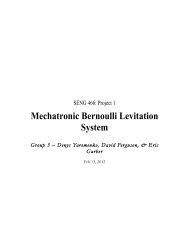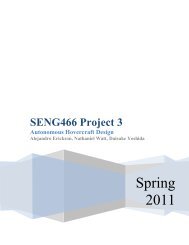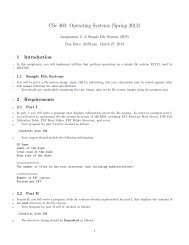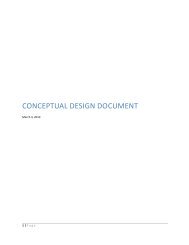Embedded Systems Design with the Atmel AVR Microcontroller Part II
Embedded Systems Design with the Atmel AVR Microcontroller Part II
Embedded Systems Design with the Atmel AVR Microcontroller Part II
Create successful ePaper yourself
Turn your PDF publications into a flip-book with our unique Google optimized e-Paper software.
7.2 BATTERY OPERATION<br />
7.2. BATTERY OPERATION 185<br />
Many embedded systems are remote, portable systems operating from a battery supply. To properly<br />
design a battery source for an embedded system, <strong>the</strong> operating characteristics of <strong>the</strong> embedded<br />
system must be matched to <strong>the</strong> characteristics of <strong>the</strong> battery supply.<br />
7.2.1 EMBEDDED SYSTEM VOLTAGE AND CURRENT DRAIN SPECIFICA-<br />
TIONS<br />
An embedded system has a required supply voltage and an overall current requirement. For <strong>the</strong><br />
purposes of illustration, we will assume our microcontroller based embedded system operates from<br />
5 VDC. The overall current requirements of <strong>the</strong> system is determined by <strong>the</strong> worst case current<br />
requirements when all embedded system components are operational.<br />
7.2.2 BATTERY CHARACTERISTICS<br />
To properly match a battery to an embedded system, <strong>the</strong> battery voltage and capacity must be<br />
specified. Battery capacity is typically specified as a mAH rating. For example, a typical 9 VDC nonrechargeable<br />
alkaline battery has a capacity of 550 mAH. If <strong>the</strong> embedded system has a maximum<br />
operating current of 50 mA, it will operate for approximately eleven hours before battery replacement<br />
is required.<br />
A battery is typically used <strong>with</strong> a voltage regulator to maintain <strong>the</strong> voltage at a prescribed<br />
level. Figure 7.2 provides sample circuits to provide a +5 VDC and a ±5 VDC portable battery<br />
source. Additional information on battery capacity and characteristics may be found in Barrett and<br />
Pack (S. Barrett, 2004).<br />
7.3 INPUT DEVICES<br />
In this section, we discuss how to properly interface input devices to a microcontroller. We will start<br />
<strong>with</strong> <strong>the</strong> most basic input component, a simple on/off switch.<br />
7.3.1 SWITCHES<br />
Switches come in a variety of types. As a system designer it is up to you to choose <strong>the</strong> appropriate<br />
switch for a specific application. Switch varieties commonly used in microcontroller applications are<br />
illustrated in Figure 7.3(a). Here is a brief summary of <strong>the</strong> different types:<br />
Slide switch: A slide switch has two different positions: on and off. The switch is manually<br />
moved to one position or <strong>the</strong> o<strong>the</strong>r.For microcontroller applications,slide switches are available<br />
that fit in <strong>the</strong> profile of a common integrated circuit size dual inline package (DIP). A bank<br />
of four or eight DIP switches in a single package is commonly available.<br />
Momentary contact pushbutton switch: A momentary contact pushbutton switch comes<br />
in two varieties: normally closed (NC) and normally open (NO). A normally open switch,


